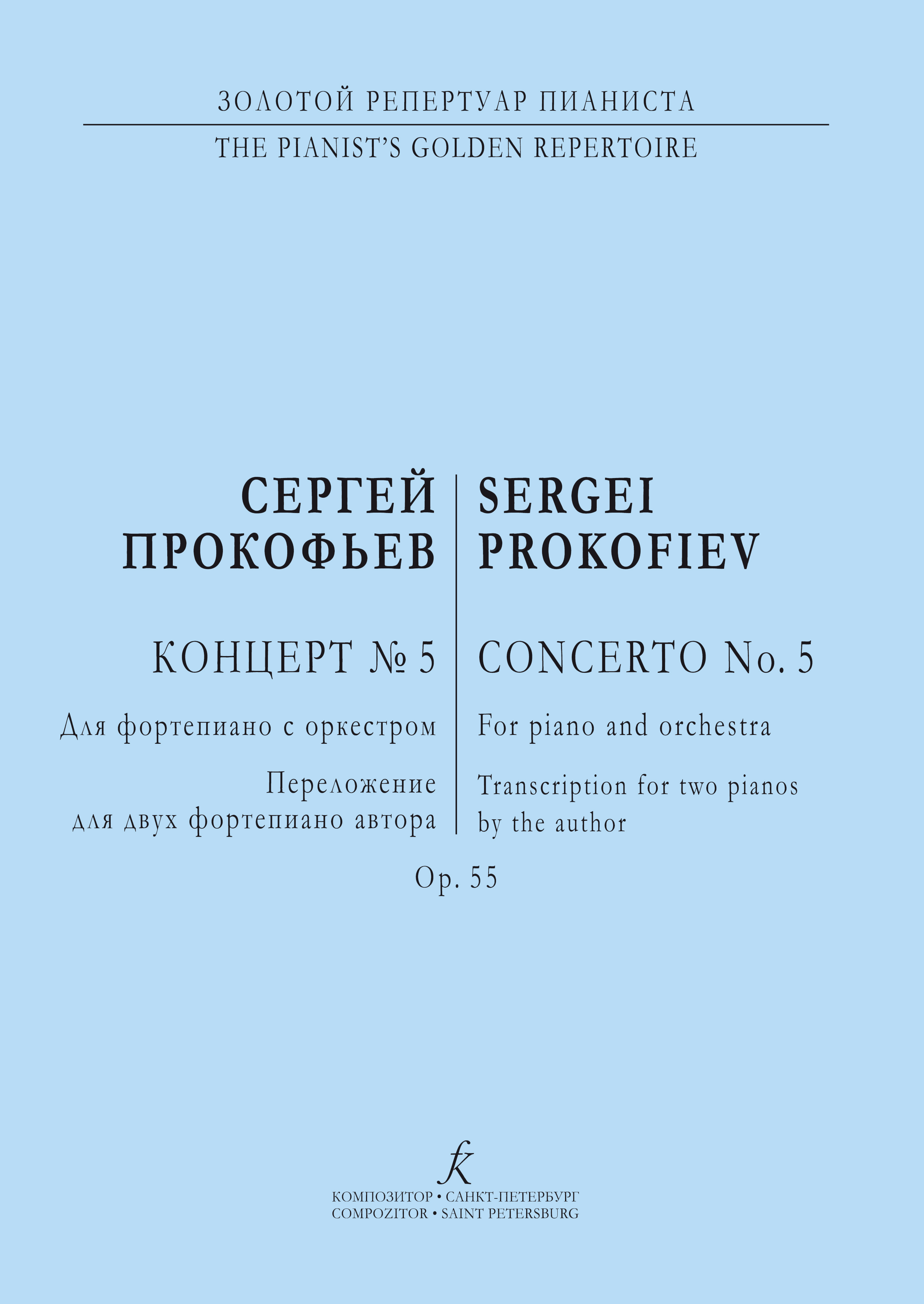
Prokofiev S. Concerto No 5 for Piano and Orchestra. For two pianos
- Author:
- Prokofiev S.
- Author (full):
- Sergei Sergeyevich Prokofiev
- Title (full):
- Concerto No 5 for Piano and Orchestra. Arranged for two pianos by the author himself. Op. 55
- Number of pages:
- 76
The great Russian composer SERGEI PROKOFIEV (1891–1953) was born in the village of Sontsovka, the Ukraine. His mother, a good amateur pianist, was his first music teacher, and later he received instructions from the composers R. Glier and (for a short time) Yu. Pomerantsev, a pupil of Taneyev. Sergei Taneyev himself closely watched the progress of the child-composer. At the St. Petersburg Conservatoire Prokofiev studied composition under N. Rimsky-Korsakov, J. Vitols and A. Liadov, conducting — under N. Cherepnin and piano under — A. Winkler and A. Yesipova.
Among his early works there are outstanding “Classical Symphony” and the Scythian Suite “Ala and Lolly” for full orchestra, First Violin Concerto, First and Second piano Concertos, “The Ugly Duckling” (after Andersen) for voice and piano, Second, Third and Fourth piano sonatas and a number of piano pieces.
For eighteen years after the Revolution (1918–1932) Prokofiev stayed abroad making extensive concert tours. The best known works of that period are his opera “Love for Three Oranges” and the Third Piano Concerto. On returning home Prokofiev received new stimuli for creative work. He produced such major compositions as the ballets “Romeo and Juliet” and “Cinderella”, the operas “Betrothal in a Nunnery” and “Semyon Kotko”, the scores for the films “Lieutenant Kizhe” and “Alexander Nevsky” (the latter serving as the basis for a cantata of the same title) and “Peter and the Wolf”, a symphonic fairy-tale for children.
By the end of the composer’s life his music became more pronouncedly national, the epic element asserted itself more forcefully and his melodies acquired greater breadth and songfulness (for instance, the opera “War and Peace”, the ballet “Tale of the Stone Flower”, the Fifth, Sixth and Seventh symphonies, the Symphony-Concerto for Cello and Orchestra and some others.
Prokofiev composed his Fifth Concerto for Piano and Orchestra, Opus 55, in 1932, shortly before his return to the USSR. That was a period of intensive searchings for a new style; like some other works of that time, the Fifth Concerto reveals the composer’s striving to satisfy the emotional demands of broad audiences. “I had accumulated a good number of vigorous major themes in my notebook”, Prokofiev wrote in his “Autobiography”. “I had not intended the concerto to be difficult... But in the end it turned out to be complicated... What was the explanation? In my desire for simplicity I was hampered by the fear of repeating old formulas, of reverting to the ‘old simplicity’. ...I searched for ‘a new simplicity’ only to discover that the new simplicity, with its novel forms and, chiefly, the new tonal structure, was not understood”. These self-critical words correctly describe the peculiarities not only of the Fifth Concerto, but of a number of other works belonging to that period of searchings. It is true that as regards unity of style and depth of content the Fifth Piano Concerto is somewhat inferior to its predecessors — the Second and Third concertos — and certainly to the masterpieces that came after it, such as the Sixth and Seventh symphonies, the Symphony-Concerto for Violoncello and Orchestra and the last three piano sonatas. Yet the originality and vigour of the Concerto’s musical themes and their unusual counterposition and development make the Concerto attractive for the players and listeners alike.
- Author
- Prokofiev S.
- Author (full)
- Sergei Sergeyevich Prokofiev
- Title (full)
- Concerto No 5 for Piano and Orchestra. Arranged for two pianos by the author himself. Op. 55
- Number of pages
- 76
